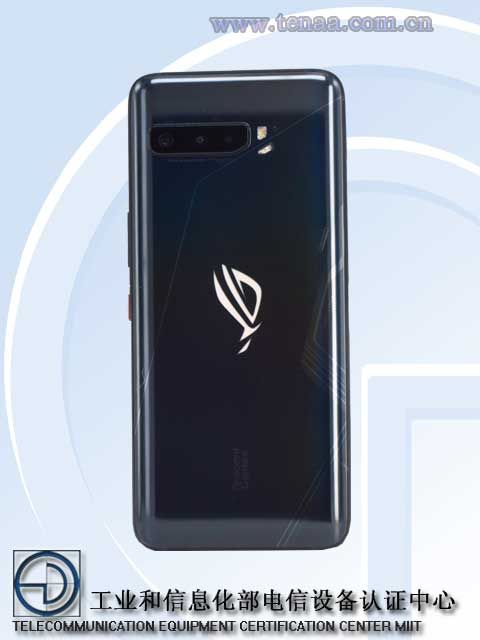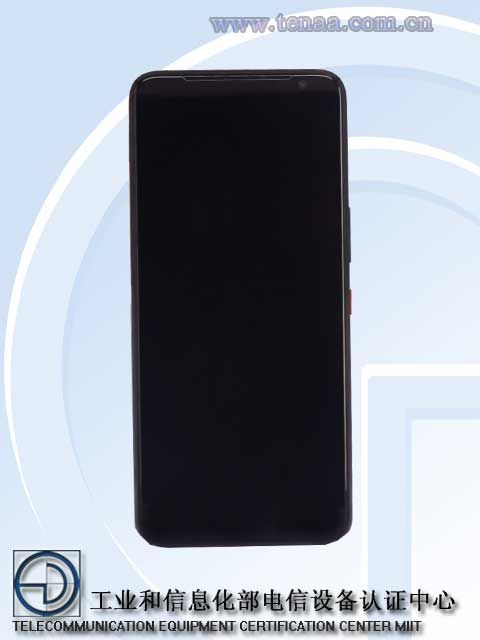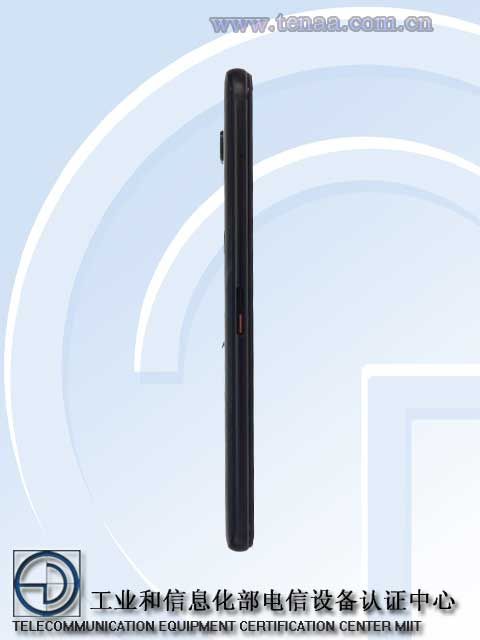Chinese regulatory agency TENAA has published detailed specifications and a few renders of the upcoming ASUS ROG Phone 3. This is the third smartphone in the ASUS ROG Phone line, and it’s poised to feature ludicrous hardware just as before. Here’s what we know so far.
Back in February, Qualcomm published a list of already-announced and upcoming smartphones that feature the Snapdragon 865 mobile platform. That list included the unannounced ASUS ZenFone 7 and ASUS ROG Phone 3, so we’ve known for some time that ASUS will continue to use the most powerful Snapdragon chipset on the market. We also learned that the ASUS ROG Phone 3 will come pre-loaded with Google Stadia and will support a number of ROG gaming features including Aura Lighting, Refresh Rate Control, and Performance Boost and also accessories including the View Dock and Kunai Gamepad. Finally, we learned from an ASUS executive that the ROG Phone 3 will launch sometime next month. Thanks to TENAA, we now know a lot more about this upcoming gaming smartphone.




First, we can see that the ROG Phone 3 has a very similar design to the ROG Phone II. The new ROG Phone has a similar rectangular shape, horizontal camera array on the rear, and display. Like the ROG Phone II, the ROG Phone 3 won’t have a display notch or a hole-punch cutout. There’s an extra camera on the rear which could be a telephoto camera, and the main camera seems to be upgraded to a 64MP sensor. The Aura RGB strip that lights up the ROG logo has also returned on the ROG Phone 3. The power button and volume up/down buttons are on the right side while the secondary USB Type-C/video out port can be seen on the left-hand side. The renders published on TENAA don’t show us the top or bottom of the phone, but the section for “headphone port” on TENAA reveals that the ROG Phone 3 has a “shared port with charger,” which means that the bottom USB Type-C port doubles as the audio port. The ROG Phone 3 appears to have dual front-facing speakers like the previous generation ROG Phone II.
The ROG Phone 3 will have a massive 6.59″ AMOLED display at FHD+ resolution (2340×1080). For security, there’s an optical under-display fingerprint scanner, much like on last year’s model. The TENAA listing does not list a refresh rate, but it’s likely the ROG Phone 3 will support a refresh rate of at least 120Hz. The phone’s dimensions are 171 x 78 x 9.85mm, making it a very thick smartphone. It’s also pretty heavy, weighing in at 240g. There is only one color listed on TENAA, Bright Black, though there could be other colors in the works. The ASUS ROG Phone II was available in two models: a China-exclusive “Tencent” model with 8GB of RAM and 128GB of storage and a global model with 12GB of RAM and 512GB of internal storage. We could see a repeat of this market strategy with the new ROG Phone.
Internally, the ROG Phone 3 will likely be one of the most powerful Android smartphones on the market when it’s released. The TENAA listing suggests the phone has an overclocked Qualcomm Snapdragon 865. The lone “Prime” core on the Snapdragon 865 is usually clocked at 2.84GHz, but the TENAA listing suggests this core can ramp up to a maximum frequency of 3.091GHz. We don’t know if the other CPU cores or the GPU have been overclocked, but it’s likely that the “X-Mode” feature will return to allow users to enable a state that tunes the CPU and GPU for high-performance. The RAM capacity is listed as a maximum of 16GB, which we presume is an LPDDR5 module. This would make the ROG Phone 3 the next Android smartphone after the Samsung Galaxy S20 Ultra and Nubia Red Magic 5G to feature up to 16GB of RAM. The available storage will be 128, 256, or 512GB of presumably UFS 3.0 storage, though there doesn’t seem to be expandable storage support, similar to the ROG Phone II. Powering this massive smartphone will be a ~6000mAh battery, which is the same capacity as on the ROG Phone II.
Since ASUS has included the Snapdragon 865 in the new ROG Phone 3, the new device will support 5G NR connectivity thanks to the Snapdragon X55 modem. Bands 41, 78, and 79 are listed on TENAA, suggesting only sub-6GHz support. We can’t rule out the possibility of a special variant with mmWave 5G support, though we think that’s unlikely since ASUS does not currently sell any of its ROG devices through American carriers.
The ROG Phone 3 runs Android 10 out-of-the-box, presumably with ROG UI customizations on top. ROG UI is basically the same as ZenUI but with a slightly tweaked UI to match the ROG gamer aesthetic and a handful of special apps like Armoury Crate for game management.
| Specification |
ASUS ROG Phone 3 (ASUS I003DD) |
| Dimensions & Weight |
171 x 78 x 9.85 mm
240g
|
| Colors |
Bright Black |
| CPU & GPU |
Qualcomm Snapdragon 865
- 1x Kryo 585 (ARM Cortex A77-based) Prime core @ 3.091GHz
- 3x Kryo 585 (ARM Cortex A77-based) Performance cores @ 2.4GHz (presumed)
- 4x Kryo 385 (ARM Cortex A55-based) Efficiency cores @ 1.8GHz (presumed)
Adreno 650 GPU
|
| RAM |
8GB, 12GB, 16GB (LPDDR5 presumed) |
| Storage |
128GB, 256GB, 512GB (UFS 3.X presumed)
Non-expandable storage
|
| Cameras |
- Rear
- 64MP + 13MP + ?MP telephoto camera (up to 8X zoom?)
- Front camera
|
| Display |
6.59″, FHD+ resolution (2340×1080), AMOLED, no notch or hole-punch cutout |
| Battery |
5800mAh (rated), 6000mAh (typ) |
| Connectivity |
- GSM: 900MHz,1800MHz
- CDMA: 800MHz,1900MHz
- TDSCDMA: 2GHz
- WCDMA: I,Band 8
- TDLTE: Band 38,Band 39,Band 40,Band 41(2555-2575 MHZ,2575-2635 MHZ,2635-2655 MHZ)
- LTEFDD: Band 1,Band 3,Band 5,Band 8
- NSA: Band 41,Band 78,Band 79
- SA: Band 41,Band 78,Band 79
|
| Ports |
USB Type-C, no 3.5mm headphone jack |
| Software |
Android 10 with ROG UI |
| Security |
Under-display fingerprint scanner |
We don’t know yet if the ROG Phone 3 will support the exact same accessories as the ROG Phone II or if users will have to purchase a new set of accessories. The TENAA listing also doesn’t confirm if the new ROG Phone has “AirTriggers,” ASUS’ term for its ultrasonic shoulder buttons, but we bet this feature will return given its utility in gaming. We also don’t know any details of the front-facing camera sensor, but we doubt it will be significantly upgraded from the front camera on the ROG Phone II. Most importantly, we don’t know anything about pricing. We’ll hopefully learn all of these details soon.
The post ASUS ROG Phone 3 specs reveal massive 6000mAh battery, overclocked Snapdragon 865, 16GB of RAM, but no headphone jack appeared first on xda-developers.
from xda-developers https://ift.tt/3d5lMMn
via
IFTTT







